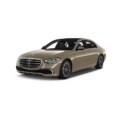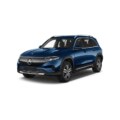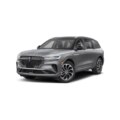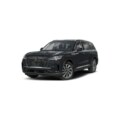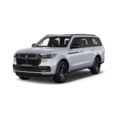- Home
- Mercedes Benz
- Mercedes-Benz EQE AMG®
Mercedes-Benz EQE AMG®
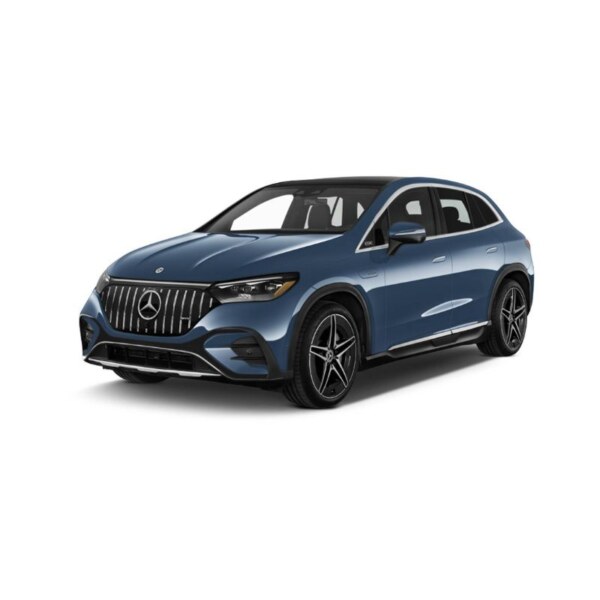

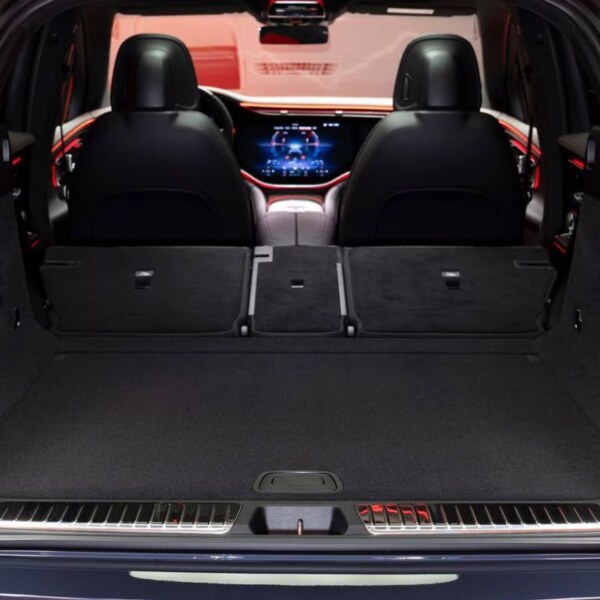
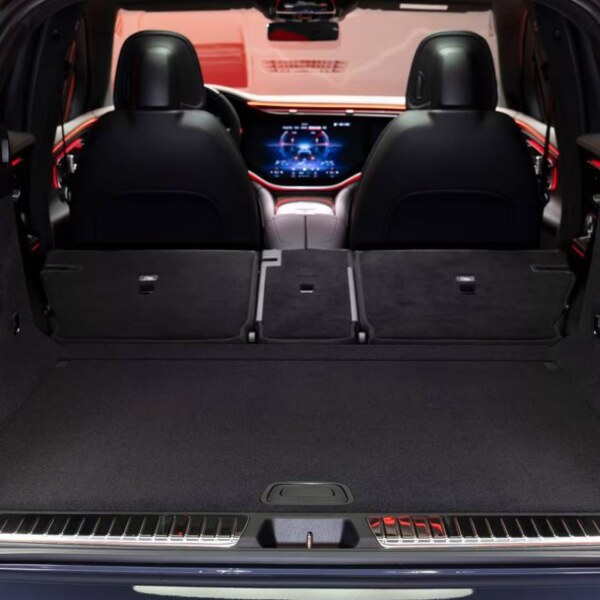
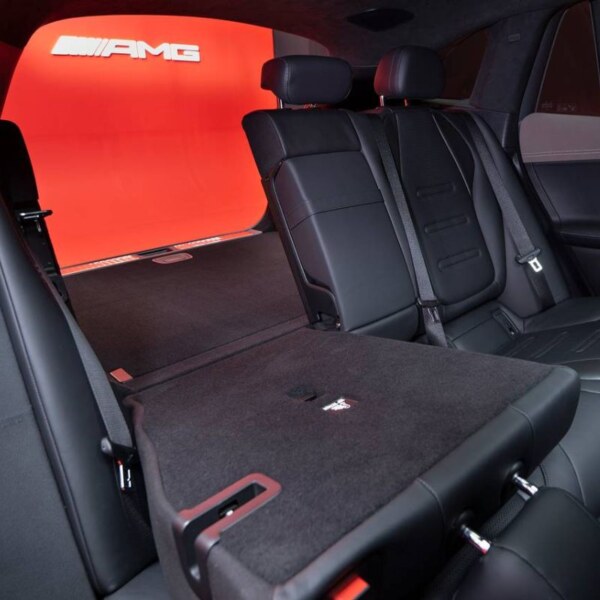
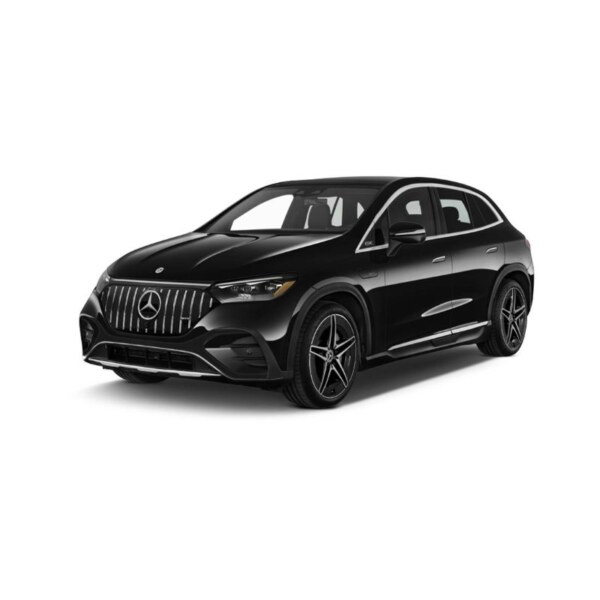

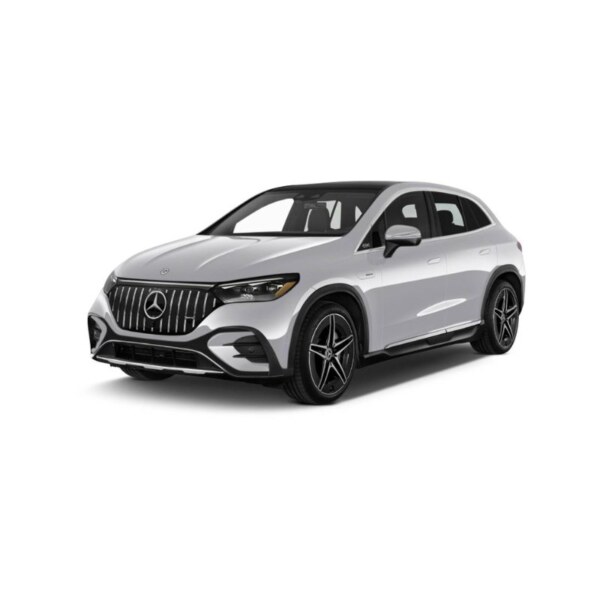
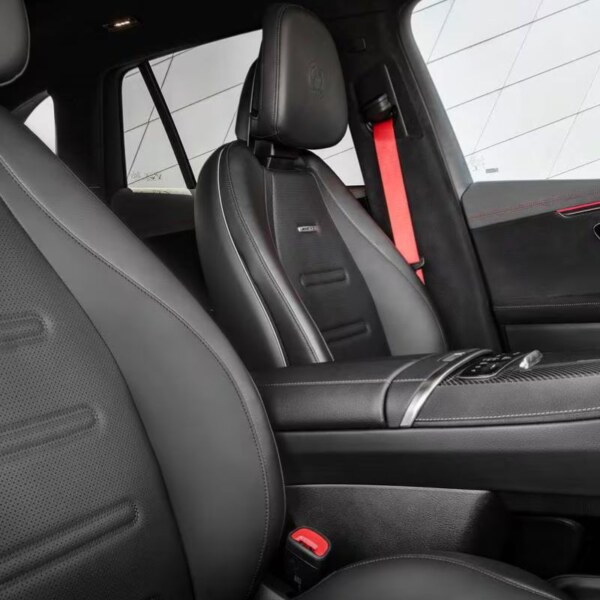
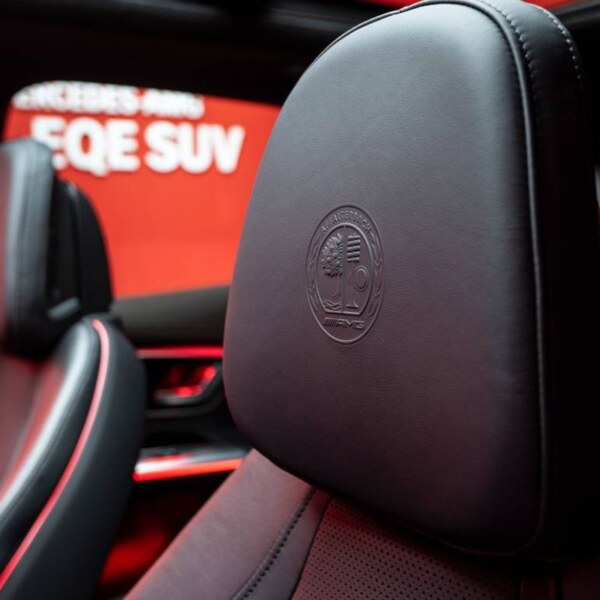
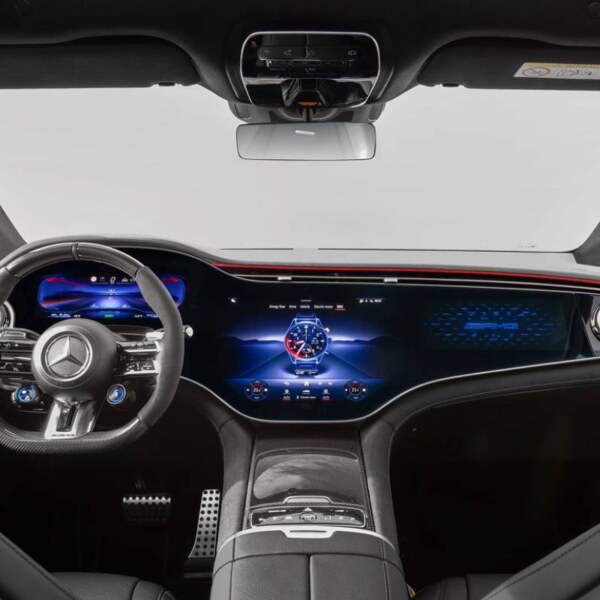
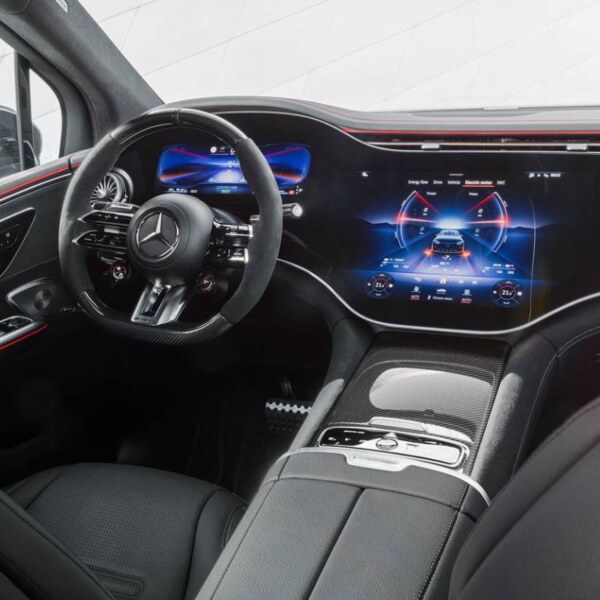
Specifications
Overview
| Models Car models are the different versions or designs of cars made by a manufacturer, each with unique features, styles, and configurations. | AMG® EQE |
| Year typically refers to the model year of a vehicle, which indicates its design and production cycle rather than the actual manufacturing date. | 2025 |
| All Electric Range The distance an electric vehicle can travel on a single battery charge without using any gasoline or other fuels. | 230 mi. |
| Drive Type A car's drive type refers to which wheels receive power from the engine. For example, front-wheel drive (FWD) powers the front wheels, rear-wheel drive (RWD) powers the rear, and all-wheel drive (AWD) or four-wheel drive (4WD) power all four wheels. | all wheel drive |
| Total Seating Car total seating refers to the maximum number of passengers a car can accommodate, including the driver. | 5 |
| Curb Weight Car curb weight is the weight of a vehicle with all standard equipment, fluids, and a full tank of fuel, but without passengers or cargo. | 5,768 lbs. |
| Home Charging Time (240V) | 10.75 hr. |
| Dealerships Car dealerships are businesses that sell new or used vehicles directly to consumers, often providing financing, trade-ins, and maintenance services. |
2411 S Federal Hwy, Fort Lauderdale, FL 33316, United States |
Fuel & MPG / Battery & Range
| Fuel type Fuel type refers to the kind of energy source used to power an engine or appliance, such as gasoline, diesel, electricity, or alternative fuels. | Electric |
| Battery capacity Car battery capacity is the amount of electrical energy a battery can store and deliver, usually measured in ampere-hours (Ah). | 90.6 kWh |
| EPA combined MPGe The EPA combined MPGe rating shows how many miles a car can travel using energy equivalent to one gallon of gasoline, blending city and highway efficiency. | 74 MPGe |
| EPA city/highway MPGe EPA city/highway MPGe measures a vehicle's energy efficiency in city and highway driving, expressed in miles per gallon equivalent (MPGe), comparing electric energy use to gasoline consumption. | 76/72 MPGe |
| EPA kWh/100 mi EPA kWh/100 mi is a measure of an electric car's efficiency, showing how many kilowatt-hours of energy the vehicle consumes to travel 100 miles. | 46 |
| Fast-charge port type A car fast-charge port is a high-power charging connector designed to quickly deliver direct current (DC) to an electric vehicle’s battery, reducing charging time compared to standard charging ports. | SAE Combo |
| EPA electricity range The EPA electricity range is the estimated distance an electric vehicle can travel on a single charge, based on standardized tests by the Environmental Protection Agency. | 230 mi. |
| EPA time to charge battery (at 240V) Most electric cars typically require about 8–12 hours for a full charge on a 240V (Level 2) charger, though the exact time depends on the car's battery capacity and efficiency. | 10.75 hr. |
Engine
| Base engine type A car’s base engine type refers to its fundamental design—typically the configuration (like inline, V-type, or boxer) and the fuel it uses (gasoline, diesel, etc.). | Electric |
| Horsepower Car horsepower is a unit of power that measures how much work an engine can perform, with one horsepower roughly equal to 746 watts. | 617 hp |
| Torque Car torque is a measure of the engine's twisting force, indicating its ability to accelerate the vehicle and overcome resistance. | 701 lb-ft |
Towing & Hauling
| Max Towing Capacity | N/A |
Drivetrain
| Transmission A car transmission is the system that transfers power from the engine to the wheels, using different gear ratios to control speed and torque. | 4,000 lbs. |
| Drive Type A car's drive type refers to which wheels receive power from the engine. For example, front-wheel drive (FWD) powers the front wheels, rear-wheel drive (RWD) powers the rear, and all-wheel drive (AWD) or four-wheel drive (4WD) power all four wheels. | All wheel drive |
| Descent control | Standard |
Suspension
| Four-wheel independent suspension | Standard |
| Front and rear stabilizer bar | Standard |
Dimensions
| Length | 192.1 in. |
| Overall width with mirrors | 84.3 in. |
| Overall width without mirrors | 76.4 in. |
| Height | 65.7 in. |
| Wheelbase A car's wheelbase is the distance between the centers of its front and rear wheels. | 119.3 in. |
| Manufacturer 0-60 mph acceleration time | 3.4 seconds |
| Turning circle The car turning circle is the smallest circular path a vehicle can complete, reflecting its maneuverability. | 37.4 ft. |
| Curb Weight Car curb weight is the weight of a vehicle with all standard equipment, fluids, and a full tank of fuel, but without passengers or cargo. | 5,768 lbs. |
| Maximum towing capacity | 4,000 lbs. |
| Country of final assembly A car’s country of final assembly is the nation where the vehicle is put together into its final form, regardless of where its parts were produced. | United States |
Front Seat Dimensions
| Leatherette | Standard |
| Front head room | 41.7 in. |
| Front leg room | 40.6 in. |
| Front shoulder room | 58.9 in. |
| Front hip room | 56.5 in. |
| Cloth | Standard |
| Bucket front seats | Standard |
| Driver seat with power adjustable lumbar support | Standard |
| 3 memorized driver seat settings | Standard |
| Height adjustable passenger seat | Standard |
| Passenger seat with power adjustable lumbar support | Standard |
| Multi-level heated driver seat | Standard |
Rear Seat Dimensions
| Rear head room | 39.4 in. |
| Rear leg room | 40.6 in. |
| Rear shoulder room | 57.0 in. |
| Folding center armrest | Standard |
| Split-folding rear seatback | Standard |
In-Car Entertainment
| Display size | 17.7" |
| Total speakers | 15 |
| AM/FM stereo | Standard |
| Surround audio surround audio (discrete) | Standard |
| USB connection | Standard |
| USB with external media control | Standard |
| Satellite radio satellite radio | Standard |
| 3 months of provided satellite radio service | Standard |
Power Feature
| 4 one-touch power windows | Standard |
| 1st row power glass moonroof | Standard |
| Hands-free entry | Standard |
| Reverse tilt dual mirrors provides curb view when vehicle in reverse | Standard |
| Heated mirrors | Standard |
Instrumentation
| Trip computer | Standard |
| Tachometer | Standard |
| External temperature display | Standard |
| Clock | Standard |
Tires & Wheels
| Alloy wheels | Standard |
| Tires Size | 275/40R21 |
| Wheels Size | 21 x 9.5 |
| All season tires | Standard |
Telematics
| Emergency Service | Standard |
| Airbag Deployment Notification | Standard |
| Vehicle Alarm notification | Standard |
| Stolen Vehicle Tracking/Assistance | Standard |
| Roadside Assistance | Standard |
Warranty
| Rust | N/A |
PROS
- Luxury Meets EV Efficiency: Advanced interior, smooth AWD handling, and a 90.6 kWh battery for a refined 230-mile electric range.
CONS
- Heavy Curb Weight: At 5,768 lbs., it may feel bulky in tight urban settings.
The Mercedes-Benz EQE SUV AMG® EQE—an all-electric luxury SUV packing 617 horsepower, 701 lb-ft of torque, and a 230-mile range. With lightning-fast 0–60 mph acceleration in just 3.4 seconds, refined all-wheel drive handling, and a sleek design, the EQE blends Mercedes-Benz performance with cutting-edge electric innovation.
Your question is: Mercedes-Benz EQE SUV AMG®?
Which question will you have about this car? Let’s justify these. There, we are including the major questions and answers about this car. So, let’s start now.
The 2025 AMG EQE accelerates from 0 to 60 mph in just 3.4 seconds, thanks to its powerful 617-hp electric motor.
It offers an EPA-estimated electric range of 230 miles on a full charge.
Using a 240V Level 2 charger, the AMG EQE takes approximately 10.75 hours to fully charge.
Yes, it features standard all-wheel drive for enhanced traction and performance.
The AMG EQE is equipped with a 90.6 kWh lithium-ion battery pack.
Yes, the 2025 AMG EQE has a maximum towing capacity of up to 4,000 lbs.
